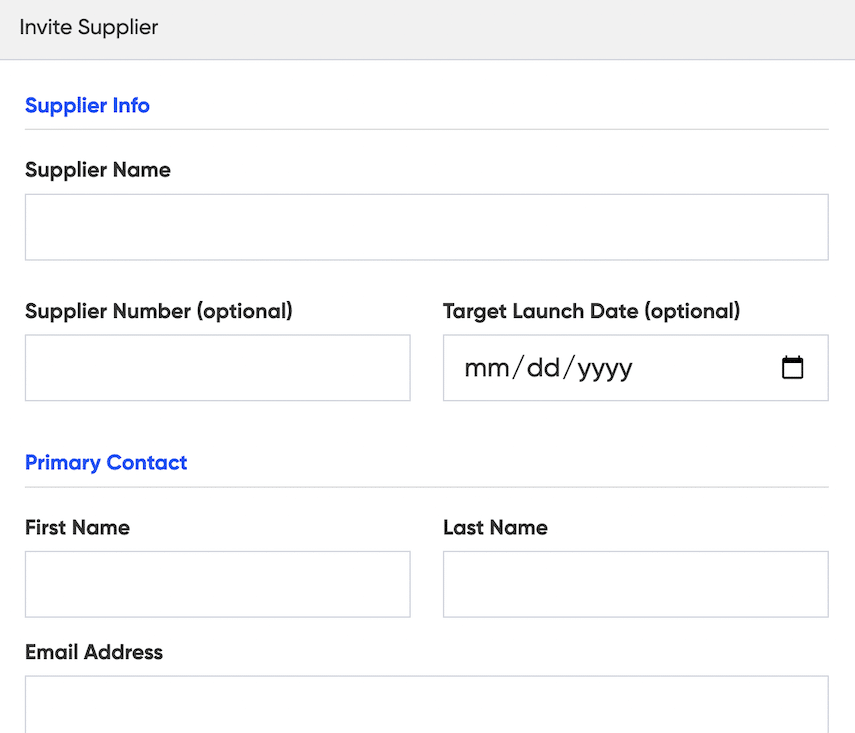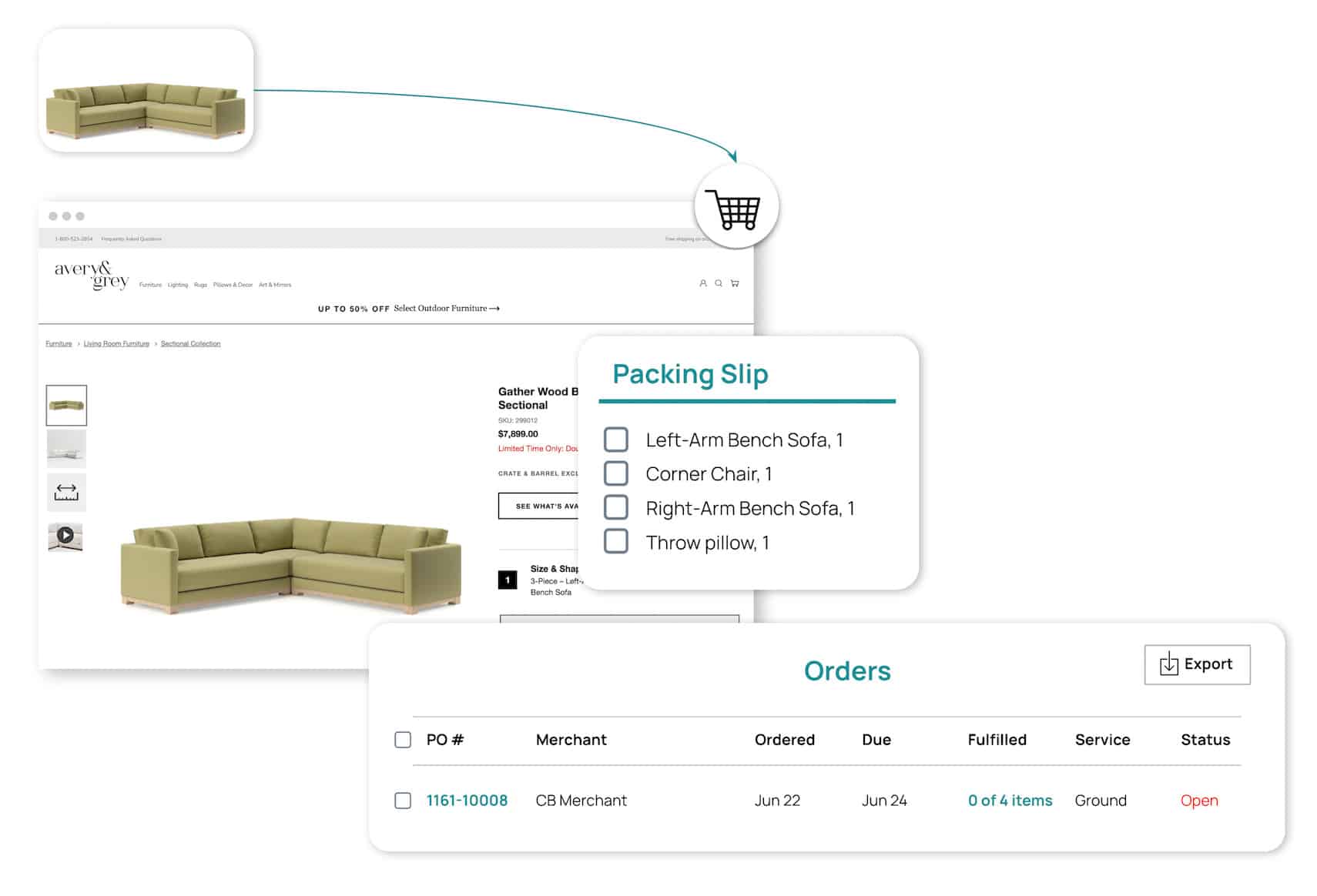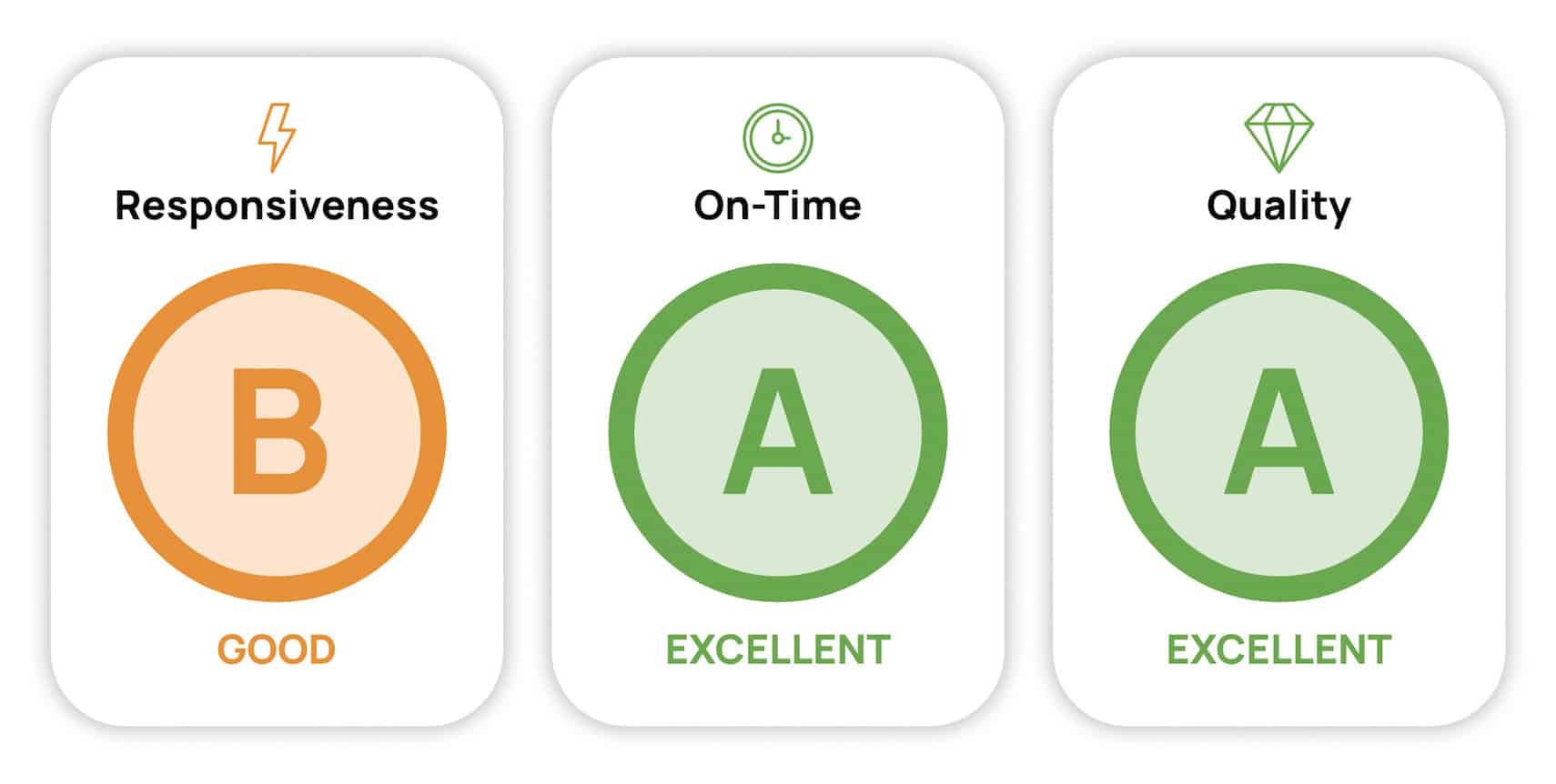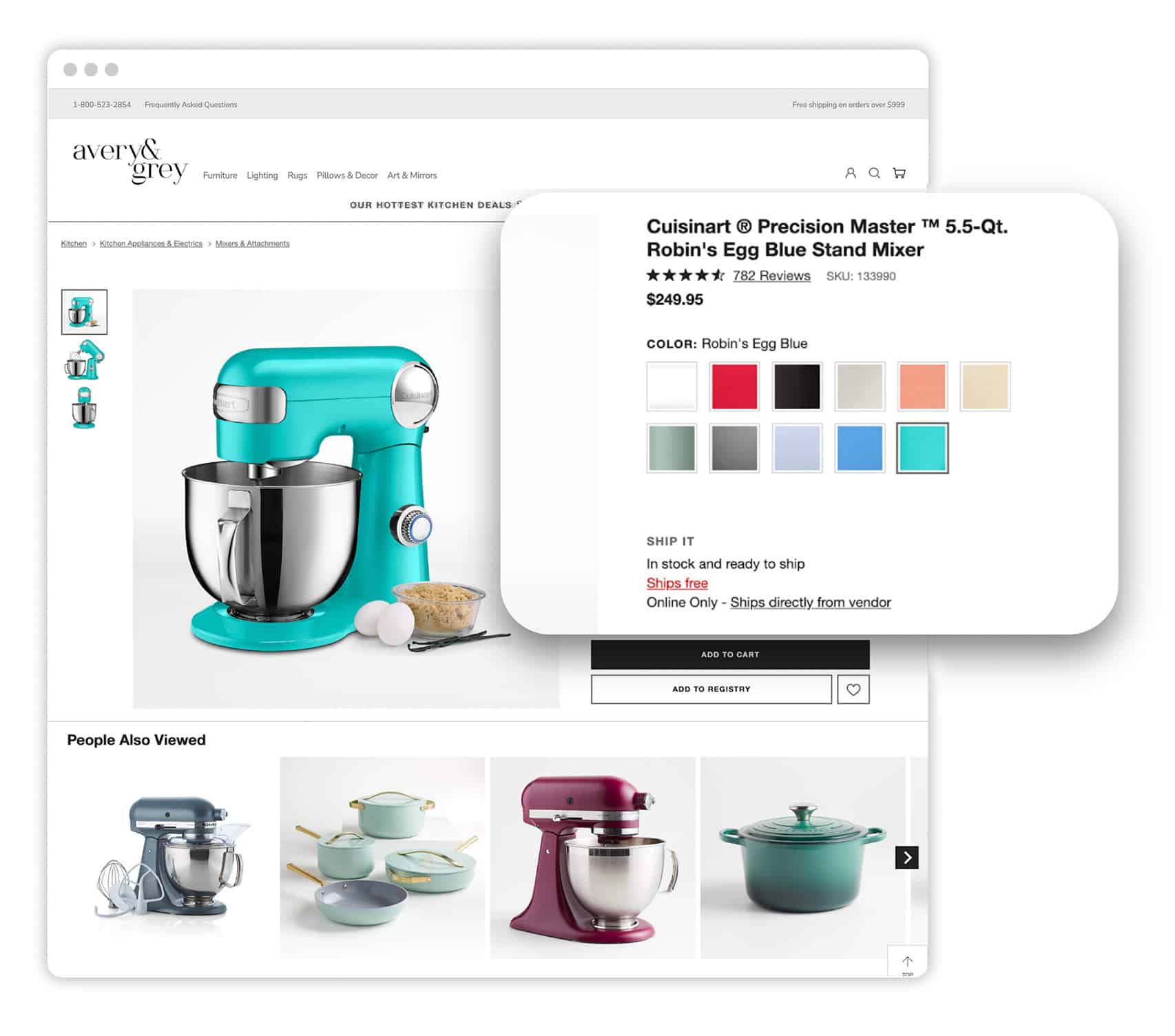August 2022: Product Releases
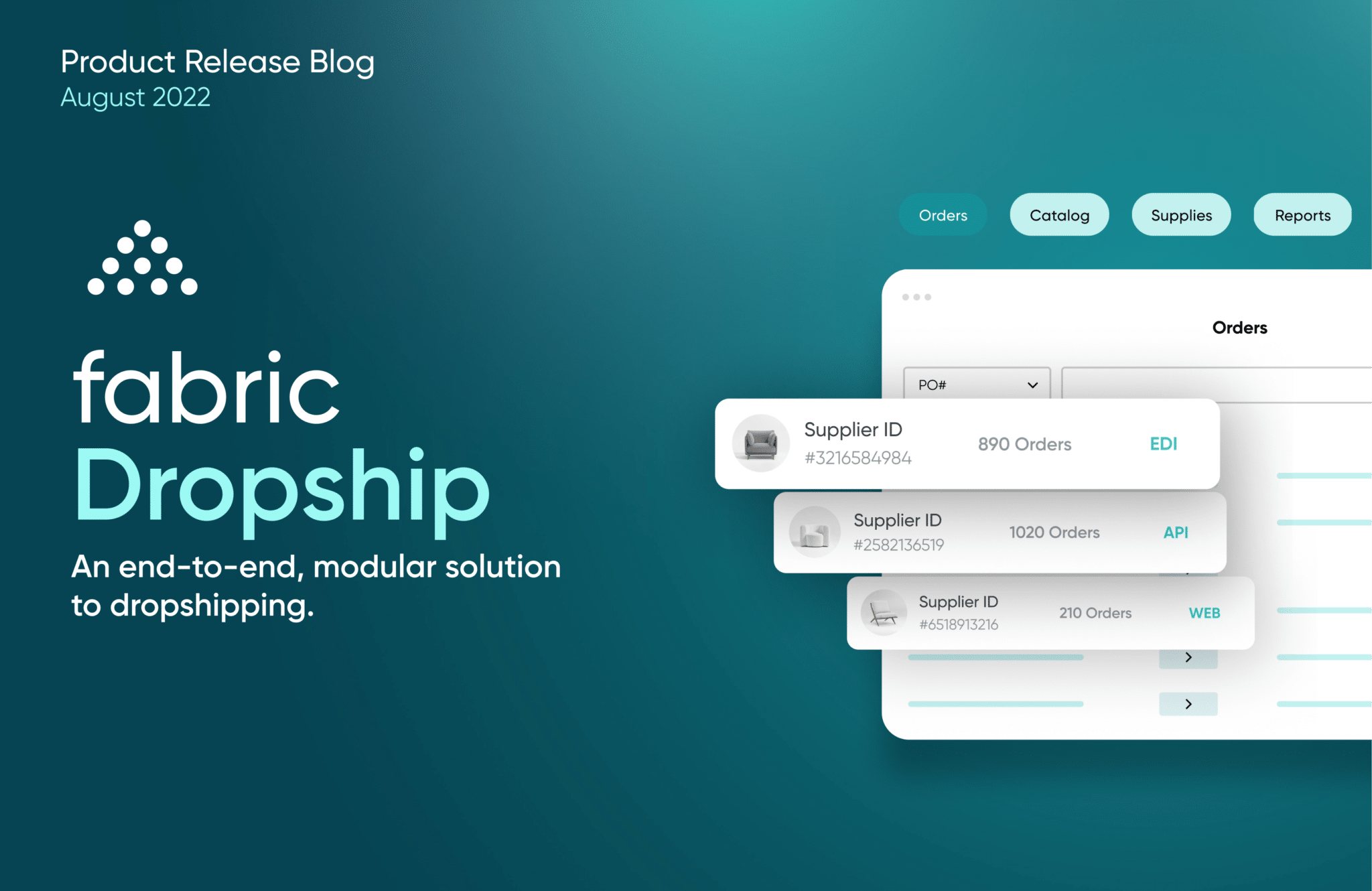
fabric’s Product Release Blog highlights some of the recent product releases and enhancements we’ve made so you can stay up to date on what’s new. This August edition is focused on the brand new features of fabric Dropship.
Vendor Connections | Catalog Management | Merchant Operations | Analytics and Reporting
When it comes to selling new product categories fast, dropshipping is often the first thing that comes to mind for many retailers. In this fall edition of fabric’s Product Release Blog, we are doing a wrap-up of fabric Dropship, a platform that makes dropshipping easy for retailers and brands.
Why fabric Dropship? The global dropshipping market is projected to reach $196.78 billion this year. We expect dropshipping to be even more relevant during the holiday season—an opportunity for retailers to stand out with better availability, wider selection, faster shipping, and smooth returns.
Topics covered in this blog include:
- fabric Dropship and its dropshipping capabilities
- How dropshipping returns work
- How fabric Dropship integrates with e-commerce tech ecosystem
- How customers are using fabric Dropship to grow their catalog
- Additional resources to learn about dropshipping and fabric Dropship
Get the complete dropshipping guide.
Learn why dropshipping is relevant in 2022.
[toc-embed headline=”fabric Dropship and its dropshipping capabilities”]
fabric Dropship and its dropshipping capabilities
fabric Dropship is an end-to-end, modular dropshipping platform that allows you to quickly and easily connect with vendors and sell new products and categories without taking on any inventory risk.
fabric Dropship covers everything from onboarding vendors to managing products, prices, and inventory to tracking order fulfillment and getting business insights. Let’s dive deeper into fabric Dropship’s dropshipping capabilities for retailers!
Vendor connections
Onboard vendors
Onboarding new vendors on fabric Dropship is simple. Invite vendors to your store, connect the systems, and get ready to build catalogs, all with a convenient dashboard.
fabric Dropship requires basic information such as the supplier’s name and contact information. You can also configure advanced rules such as fulfillment SLA, payment terms, and more that define your partnership’s success. This sends an email to the vendor inviting them to fabric Dropship.
Learn more about inviting new vendors to fabric Dropship.
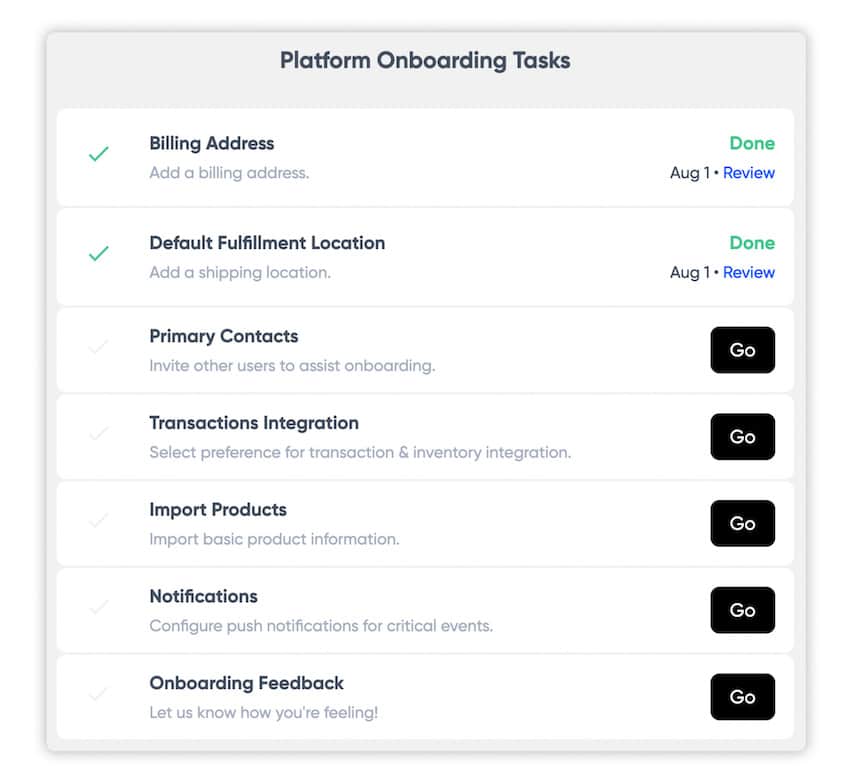
When the vendor accepts the invitation, they are assigned an onboarding specialist. The vendor can choose to go through an intuitive self-service onboarding process, or they can work with the onboarding specialist. Our onboarding specialists have been in your shoes before and offer guidance and hands-on help along the way.
fabric Dropship’s onboarding team provides documentation and hands-on training to your vendors and collects, validates, and reviews your vendor’s product data against rigorous product data requirements. It also manages testing and connections for your vendors so you can focus on growing your business.
Learn more about our high-touch onboarding.
Manage vendors
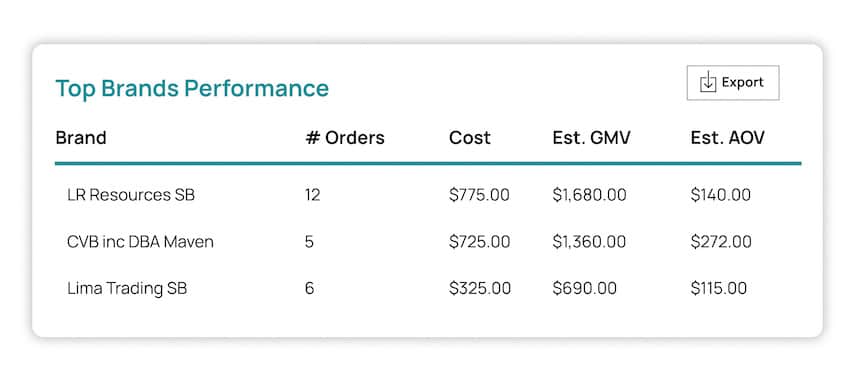
Once a vendor is invited to fabric Dropship, you can track their end-to-end journey on fabric Dropship including onboarding status, business performance, compliance, and more. Additional examples of vendor management capabilities include:
- Setting up business locations such as warehouse, billing address, etc.
- Adding attributes such as custom packing slip, returns policy, etc.
- Adding and managing carrier accounts
- Setting controls on merchandising, pricing, invoicing, and more
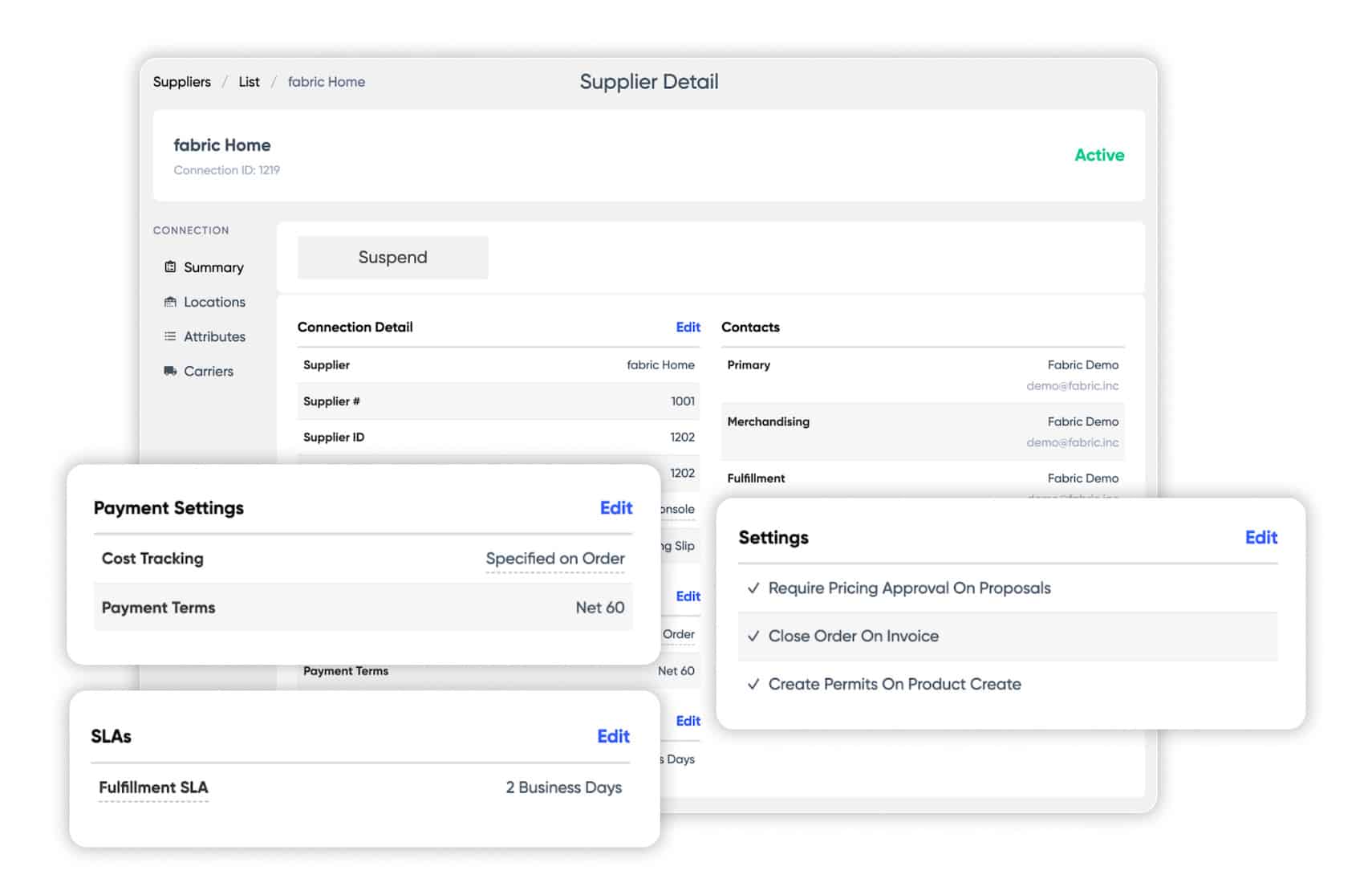
Catalog Management
fabric Dropship provides you with the tools to make managing products, prices, and inventory a stress-free experience. The platform eliminates redundant work and delivers a curated experience to your customers faster.
Learn how to maximize revenue potential by dropshipping this holiday season.
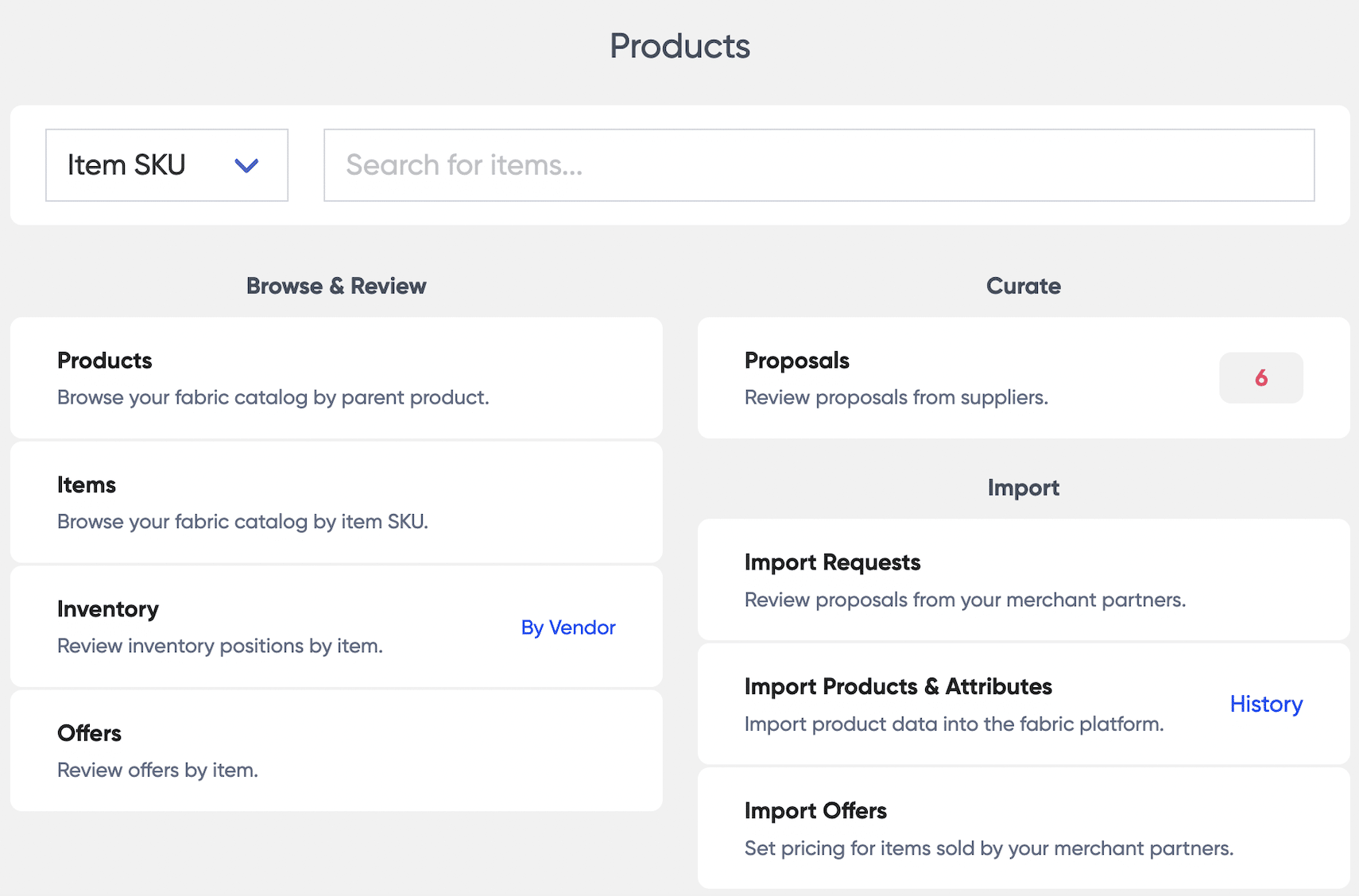
Product listings
Take complete control of your storefront. Quickly onboard new products, maintain data quality, and manage listings delivering a seamless shopping experience on your storefront. With fabric Dropship, you can:
- Connect vendor catalogs: Easily sync vendor catalogs with your store catalog—no technical skills needed. fabric Dropship can sync vendor catalogs with your store using APIs, EDI, Web Portal, or any e-commerce platform such as Shopify, Big Commerce, and Woo Commerce.
- Maintain high-quality product data: Our attribute validation engine controls the quality and completeness of the incoming data based on your templates and rules, so you always deliver the best shopping experience to your customers.
- Curate assortments: Review and approve vendor proposals on products and pricing, and take control of the assortment of products you sell in your store. Plus, respond quickly to the changes in customer needs.
Learn more about managing vendor proposals on fabric Dropship.
Virtual Inventory

Get a real-time view of supplier inventory, so you never run out of stock or oversell again. With fabric Dropship, you can:
- View live inventory: See inventory positions by SKU and vendor on an inventory dashboard. Also, view the estimated availability date of out-of-stock items.

- Automate inventory updates: Connect vendor inventory to fabric Dropship through EDI (846), flat files, or Shopify.

- Get inventory event notifications: Configure real-time notifications for critical events (out-of-stock, discontinued SKU, etc.) and daily digest for out-of-compliance items.
Learn how to view incoming inventory using fabric Dropship.
Merchant operations
fabric Dropship enables you to run smooth dropshipping operations and deliver a seamless customer experience from day one.
Share customer orders
Send all required order information to vendors so they can fulfill orders seamlessly.
How it works
When a customer places an order on your storefront, you can send the vendor the customer order or purchase order over EDI, Web Portal, API, or any e-commerce platform. For complex or personalized SKUs, you can send custom packing slips.
Changes in orders are not unusual. When a customer needs a change in their shipping address or a change in item data such as quantity, you can send the order change request to vendors as well over fabric Dropship.
Monitor order lifecycle
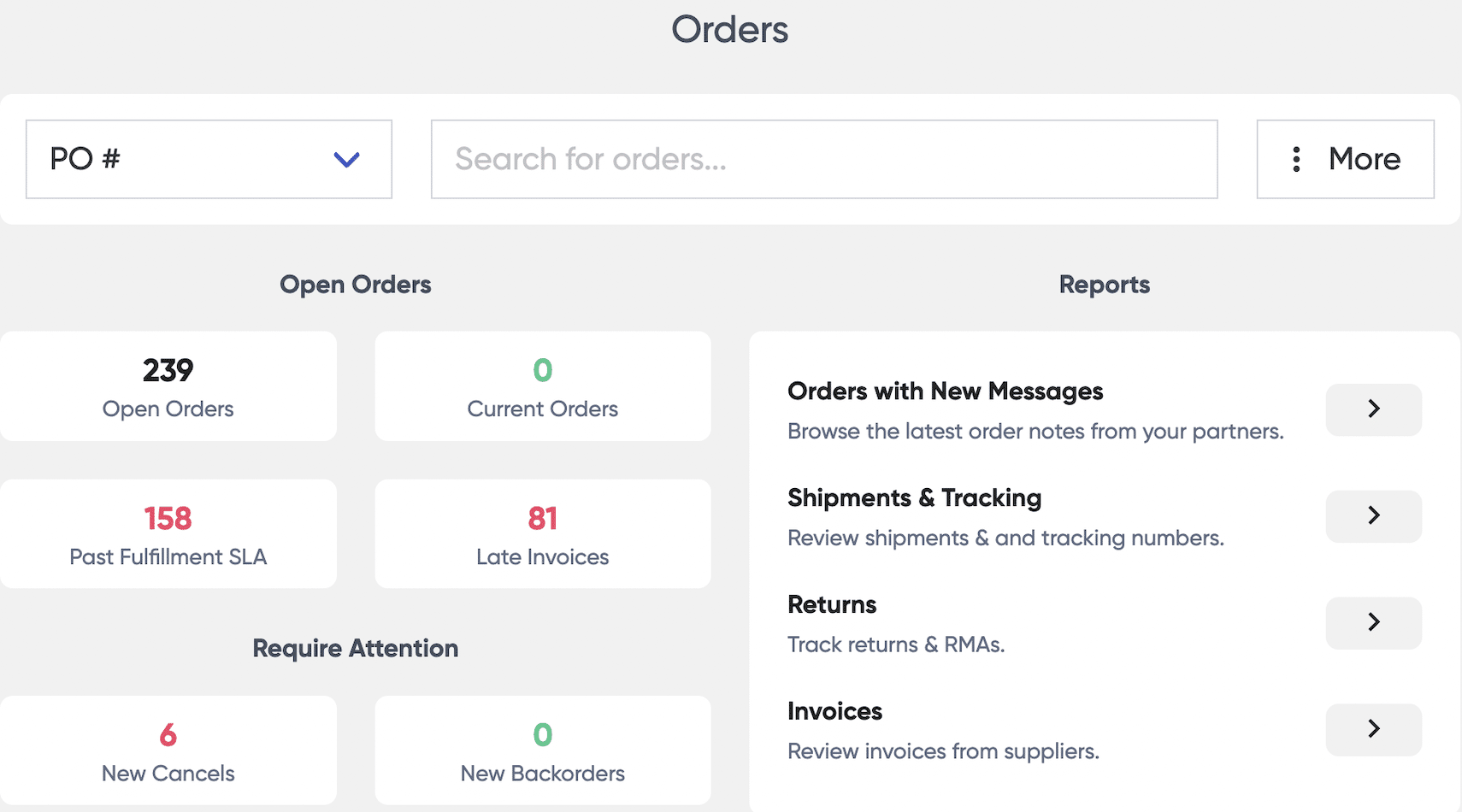
fabric Dropship’s intuitive dashboard provides you with a single destination to view and manage the end-to-end order lifecycle. The dashboard capabilities include:
- Search and view orders
- Track shipment
- Manage returns and cancellations
- Review vendor invoices
Learn more about managing orders and shipping with fabric Dropship.
Learn more about managing canceled orders and backorders on fabric Dropship.
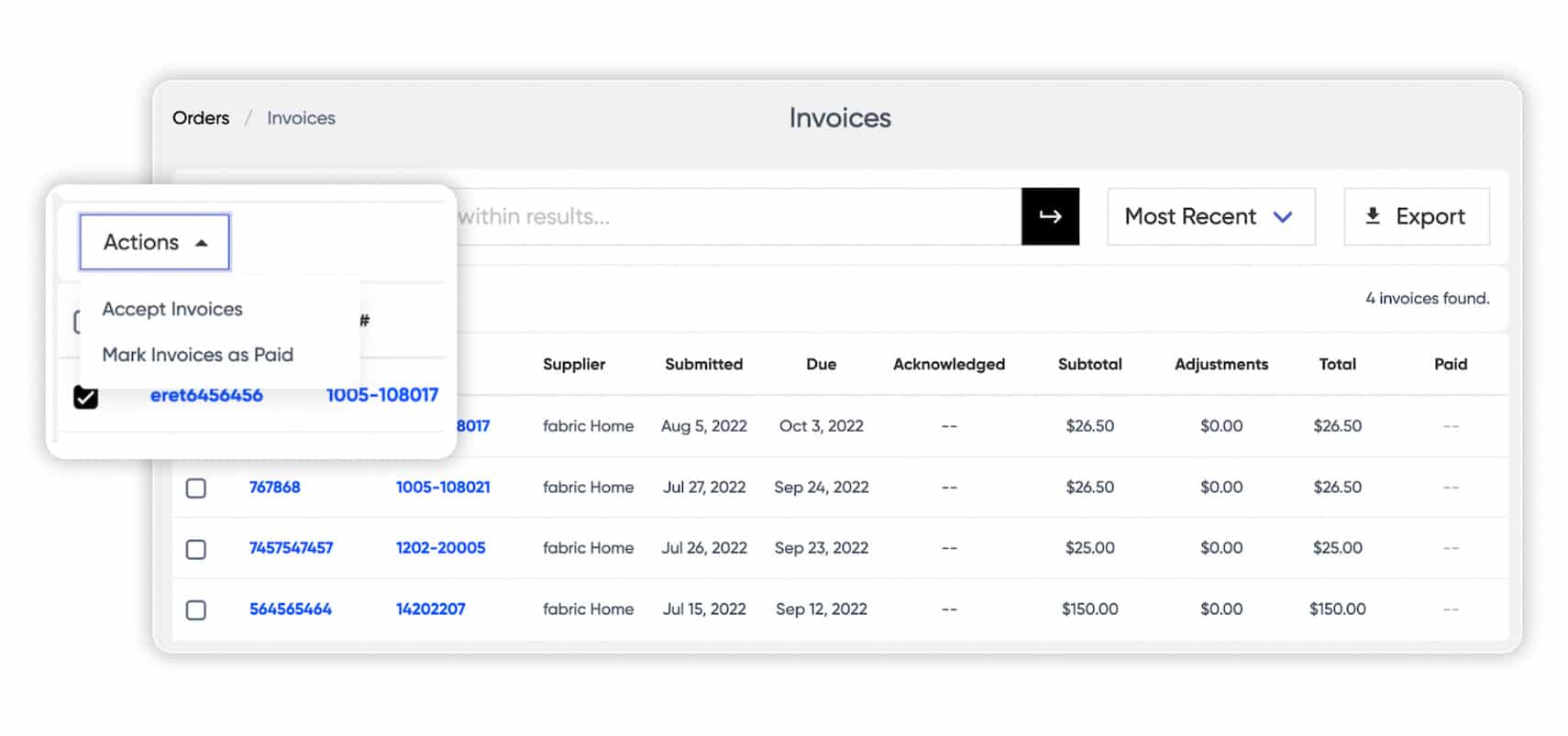
Learn more about managing vendor invoices on fabric Dropship.
Analytics and Reporting
Get more out of your dropshipping business with actionable insights.
Sales reporting
Get complete visibility into your business growth. Identify your top products and vendors. With fabric Dropship, you can:
- Track the progress of your dropshipping program
- Monitor daily operations
- Identify your top products and vendors
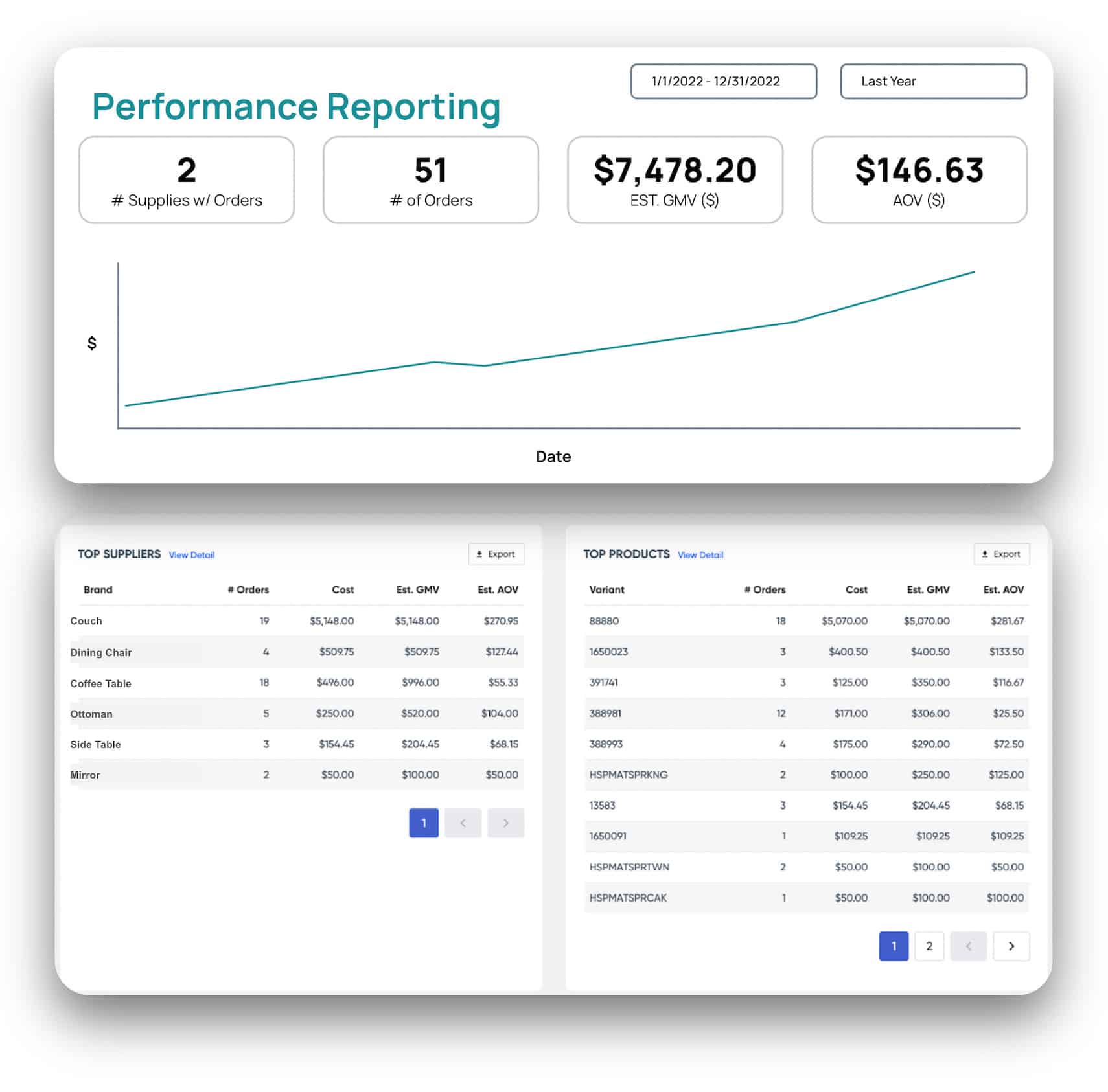
Compliance reporting
Regularly monitor the performance of your vendors against your set standards.
Financial reporting
Keep close tabs on your payables and receivables to manage your costs efficiently.

[toc-embed headline=”How returns work in fabric Dropship”]
How returns work in fabric Dropship
Exception handling, aka returns and cancellations, is a tricky subject in the context of dropshipping. The rules of return are often ambiguous and handled outside of the platform, making the returns experience clunky for the customer.
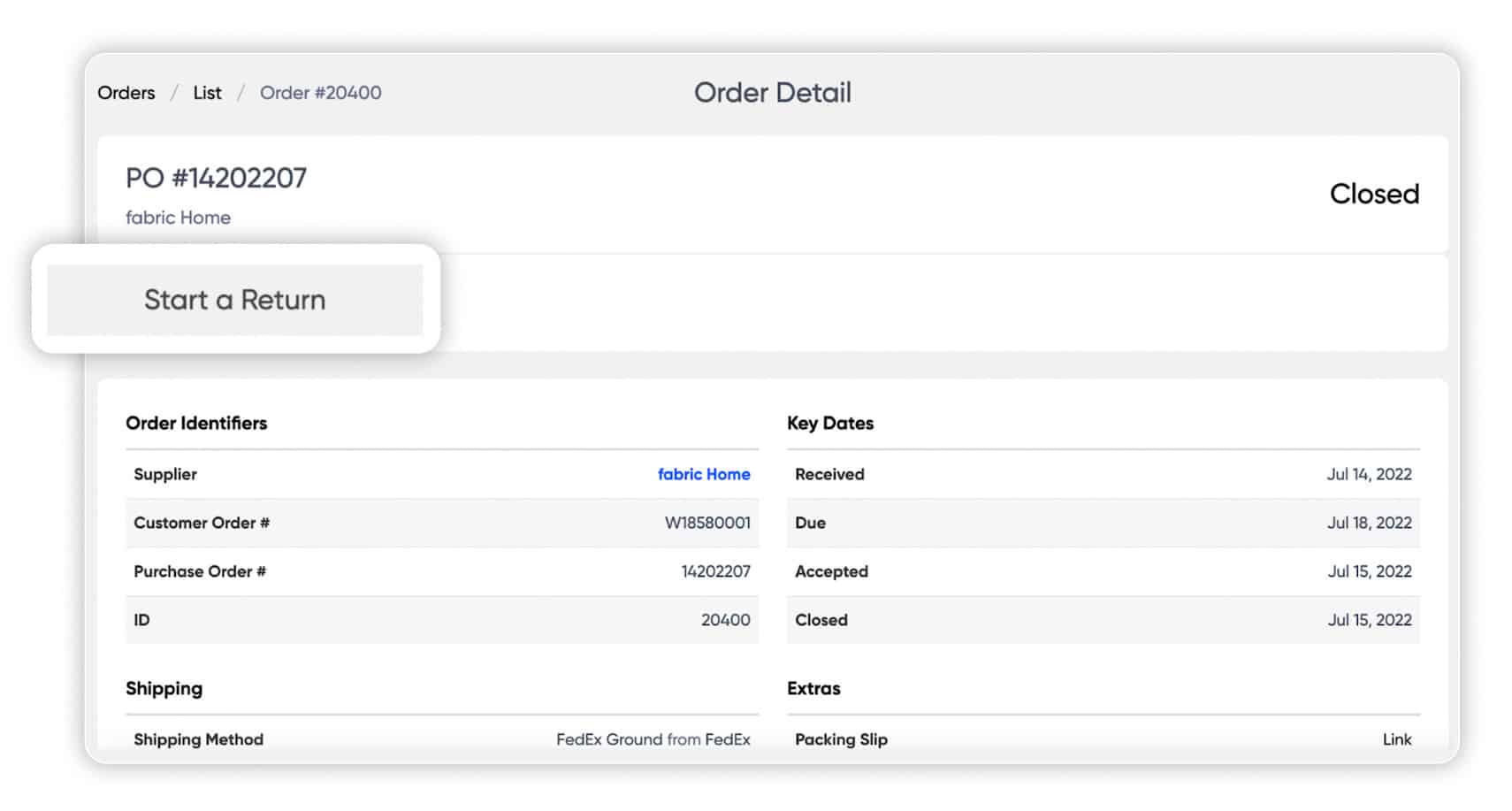
Executing returns in fabric Dropship is as straightforward as executing a new order.
How it works
Once you receive a return request from the customer, you can initiate the return process on fabric Dropship by providing a reason for return, the number of items being returned, and an RMA number (optional). Once a return has been created against an order, the vendor associated with that order is notified via email. The vendor can then either approve or decline the return.
You can track and manage returns from the Orders dashboard. When the vendor approves a return, a credit memo is generated. You can review all vendor credit memos using the Orders dashboard.
Learn more about handling returns and credit memos in fabric Dropship.
[toc-embed headline=”How fabric Dropship integrates with e-commerce tech ecosystem”]
How fabric Dropship integrates with e-commerce tech ecosystem
fabric Dropship integrates seamlessly with major e-commerce applications such as Shopify, BigCommerce, WooCommerce, Shipstation, and more. Our pre-built integrations aim to speed up onboarding so you can start getting the value out of the platform as quickly as possible.
We understand that we are not the only platform in your vast technology ecosystem. Therefore, we take both vendor-side and retailer-side integrations very seriously. The following diagram shows how fabric Dropship would be positioned in a merchant technology stack.
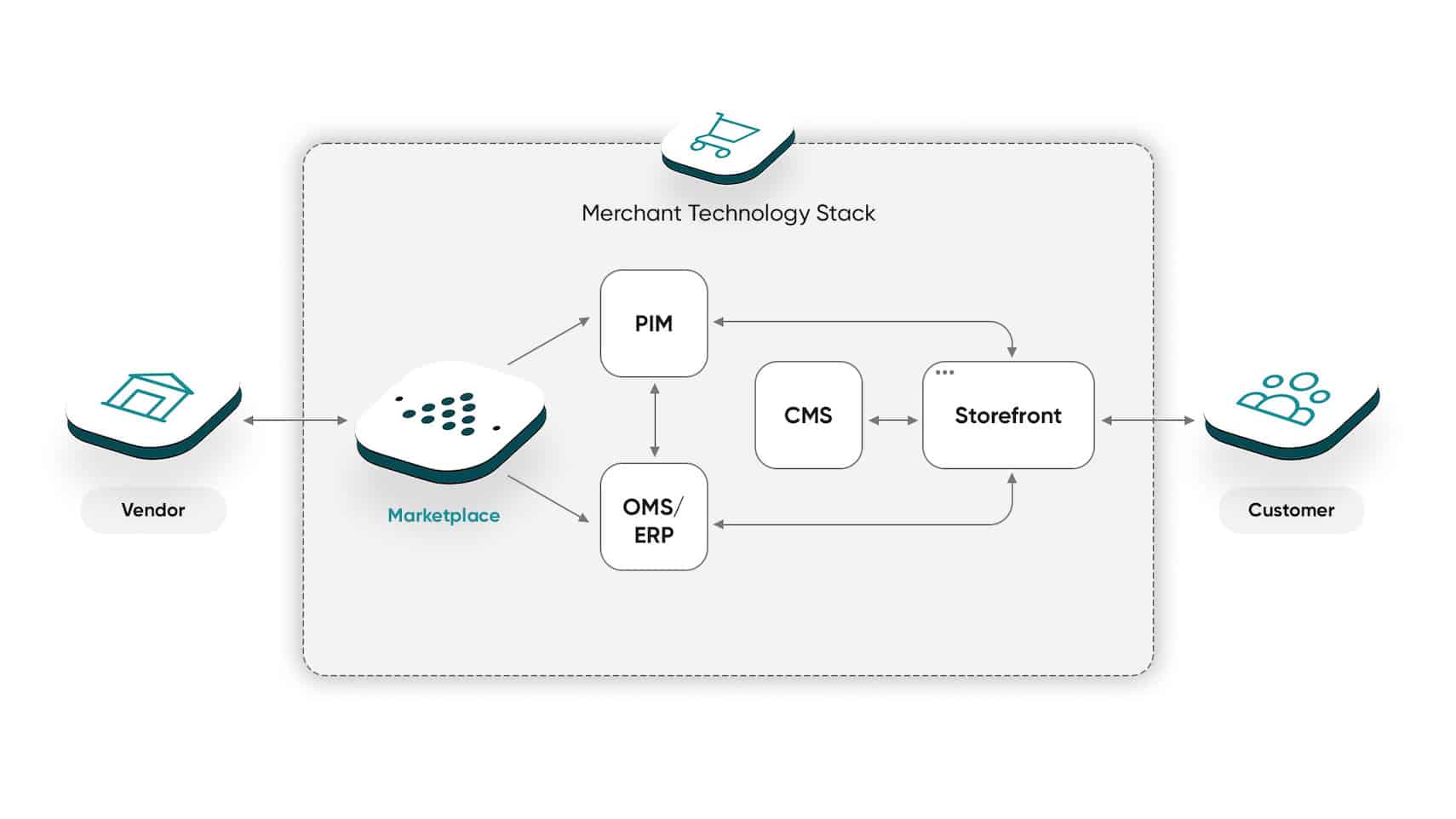
fabric Dropship has pre-built, out-of-the-box connectors with both systems providing vendors the onboarding speed and retailers the composability they are looking for. For customers using an ERP as their system of record, fabric Dropship offers comprehensive EDI connections. Other forms of connections include Web Portal.
[toc-embed headline=”How customers are using fabric Dropship to grow their catalog”]
How customers are using fabric Dropship to grow their catalog
One of the common use cases of fabric Dropship is adding variations to your existing product assortment. fabric Dropship helped a large home and furniture retailer grow its revenue from $0 to $100M in 15 months. The retailer held inventory for the fast-moving colors and variants of products and dropshipped the exquisite, rarely ordered versions through their vendors, allowing them to de-risk their business while growing it rapidly.
Category expansion is another common use case for fabric Dropship. Brooklinen, a D2C brand, and a fabric customer, added complementary categories such as rugs to their catalog to address a broader range of customer needs.
A fabric customer, Motherhood Maternity, a Marquee brand, says:
“The fabric team has a breadth of experience operating marketplaces and have collaborated with the team on brand and merchandising strategies, which resulted in $200K in incremental revenue in the first six months.”
Other common use cases of fabric Dropship:
- Seasonal inventory: Products and categories with a short selling cycle, such as holiday decor, are good for dropshipping. With dropshipping via fabric Dropship, our customers can offer all varieties of seasonal products, so there is something for everyone.
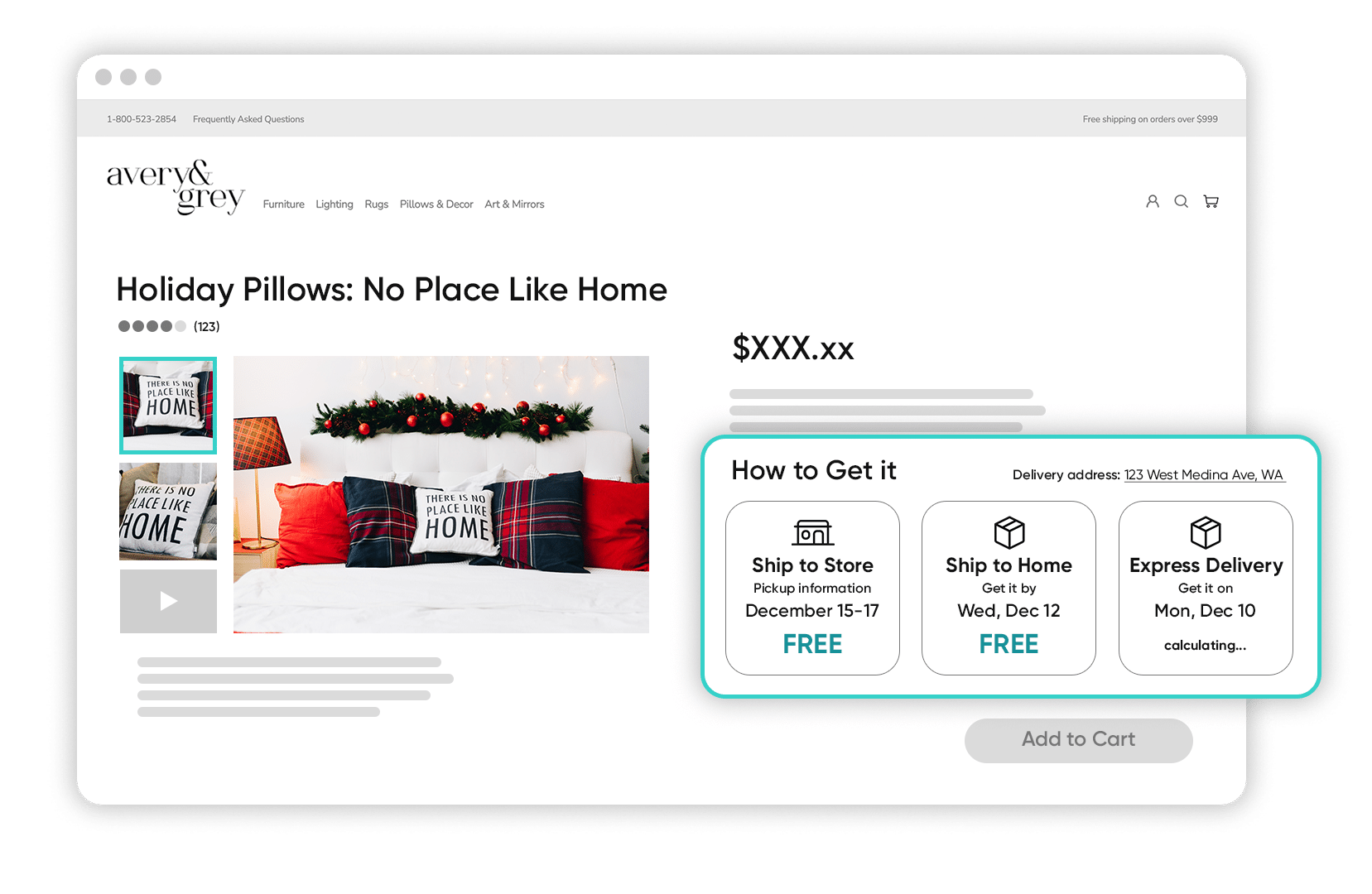
- Less than truckload (LTL) shipments: Products that take too much warehouse space or have extra shipping, packaging, and handling requirements are best dropshipped by the manufacturer to the customer. For example, a home retailer uses fabric Dropship to dropship mattresses to customers. It saves them shipping and handling costs and avoids potential in-transit damage.

- Brand collaborations: Some home and lifestyle brands on fabric Dropship collaborate with other brands on products or categories that mutually benefit them. They showcase the brand collaboration on their storefront in the form of a featured collection or co-brand the product. In either case, the product is shipped directly from the manufacturer or vendor to the customer, and fabric Dropship enables the end-to-end transaction.
- Product substitutions and recommendations: Product recommendations are a great way to cross-sell merchandise. We have seen customers being able to improve their average order value by offering their own brand as a recommendation next to the vendor brand.
A similar process but a slightly different use case is when you run out of stock on a product the customer searched for. You can suggest substitute products that a dropship vendor offers and maintain customer loyalty. For example, Brooklinen saw a 55% YoY increase in their dropship AOV due to adding a new category, rugs.
[toc-embed headline=”Additional resources”]
Additional resources
On-demand webinars and podcasts
The rise of dropshipping in retail
Our in-house retail and dropshipping expert, Meg Donovan, shares insights and tips from her 20 years of experience with some of the industry’s top leaders, including Saks 5th Avenue, Bloomingdale’s, Pottery Barn, ZGallerie, and Modsy.
How to plan a successful e-commerce holiday
fabric’s COO and Head of Products, Stacy Saal, and our Head of Developer Platform and Experience, Prakash Muppirala, draw from their experience at Amazon, Restoration Hardware, and Williams-Sonoma. They chat about the expected trends this holiday season and what retailers can do today to see a successful season.
Blogs
- fabric’s 2022 guide to dropshipping
- The Dropship Holiday: Maximize Revenue Potential by Dropshipping This Season
- E-Commerce Marketplaces: What’s the Difference Between Dropship and Third-Party?
- Why Dropshipping Is Worth It in 2022
- Dropshipping Home Decor With The Best Vendors and Brands

Product marketing @ fabric. Previously @ Accenture and Infosys.
